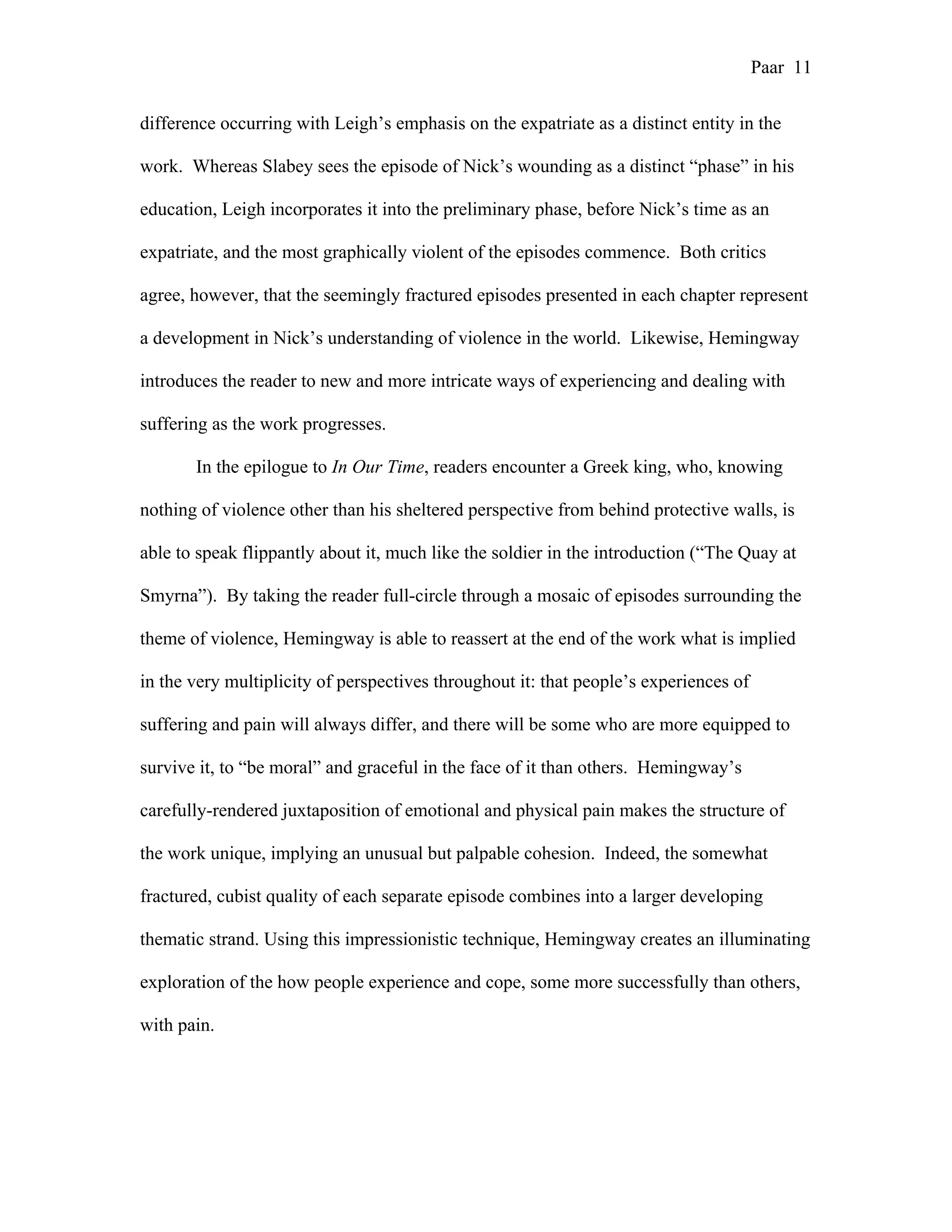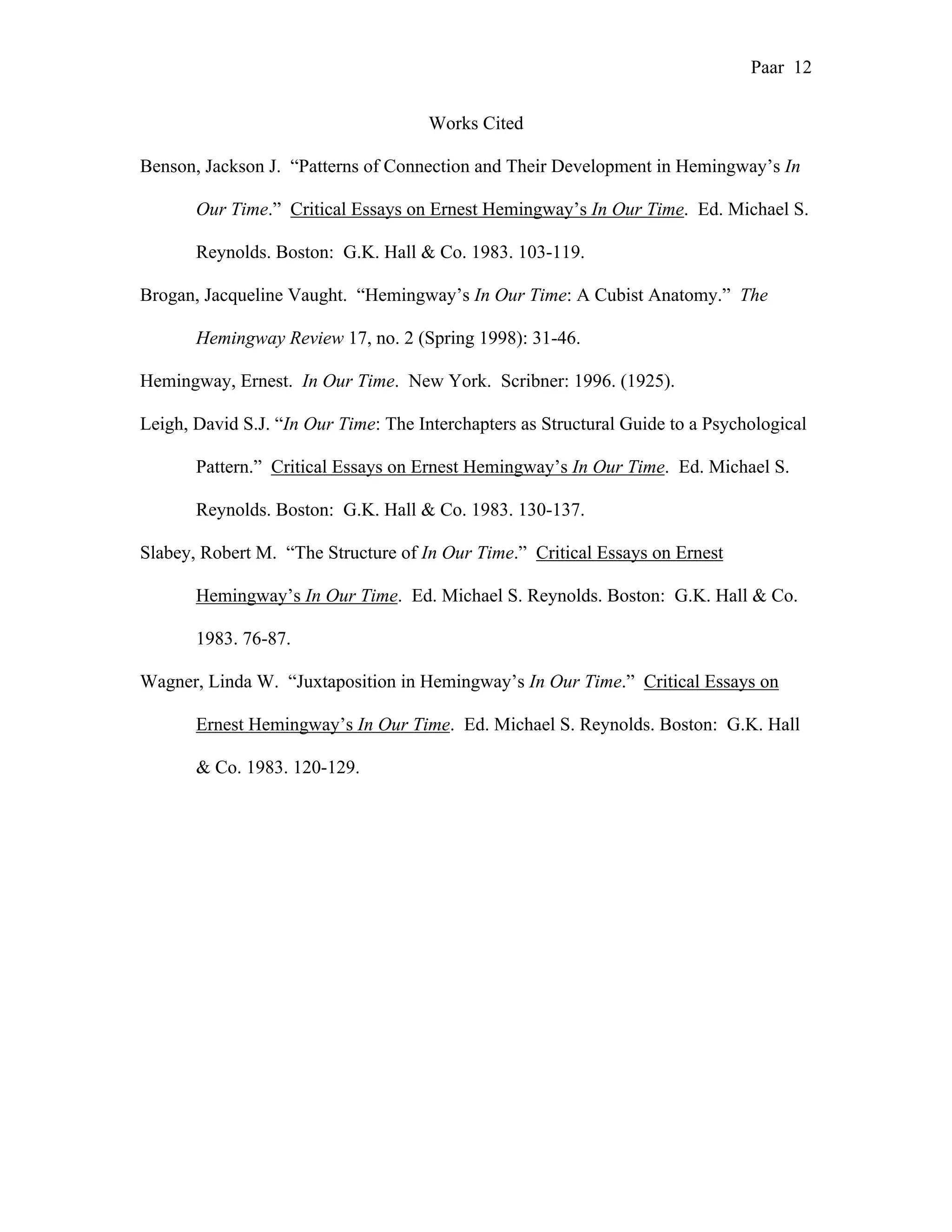This document provides an analysis of Ernest Hemingway's 1925 book "In Our Time". It summarizes that the book uses short vignettes and stories to examine how different people experience and react to violence and suffering. It discusses how the vignettes depict increasingly intense war violence while the stories show Nick Adams dealing with smaller-scale emotional trauma. By juxtaposing the vignettes and stories, Hemingway shows how experiences of pain can intersect and affect people in varied ways.
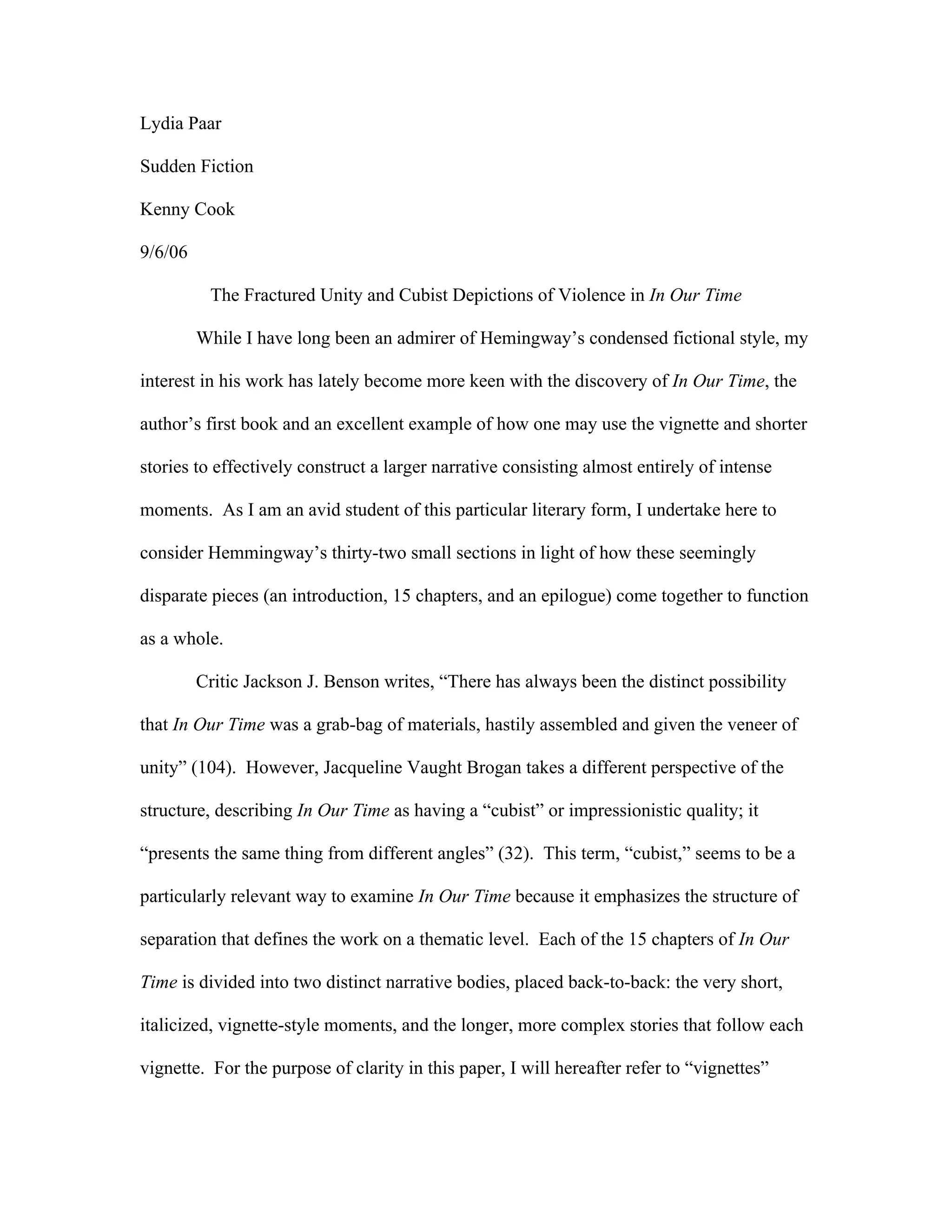
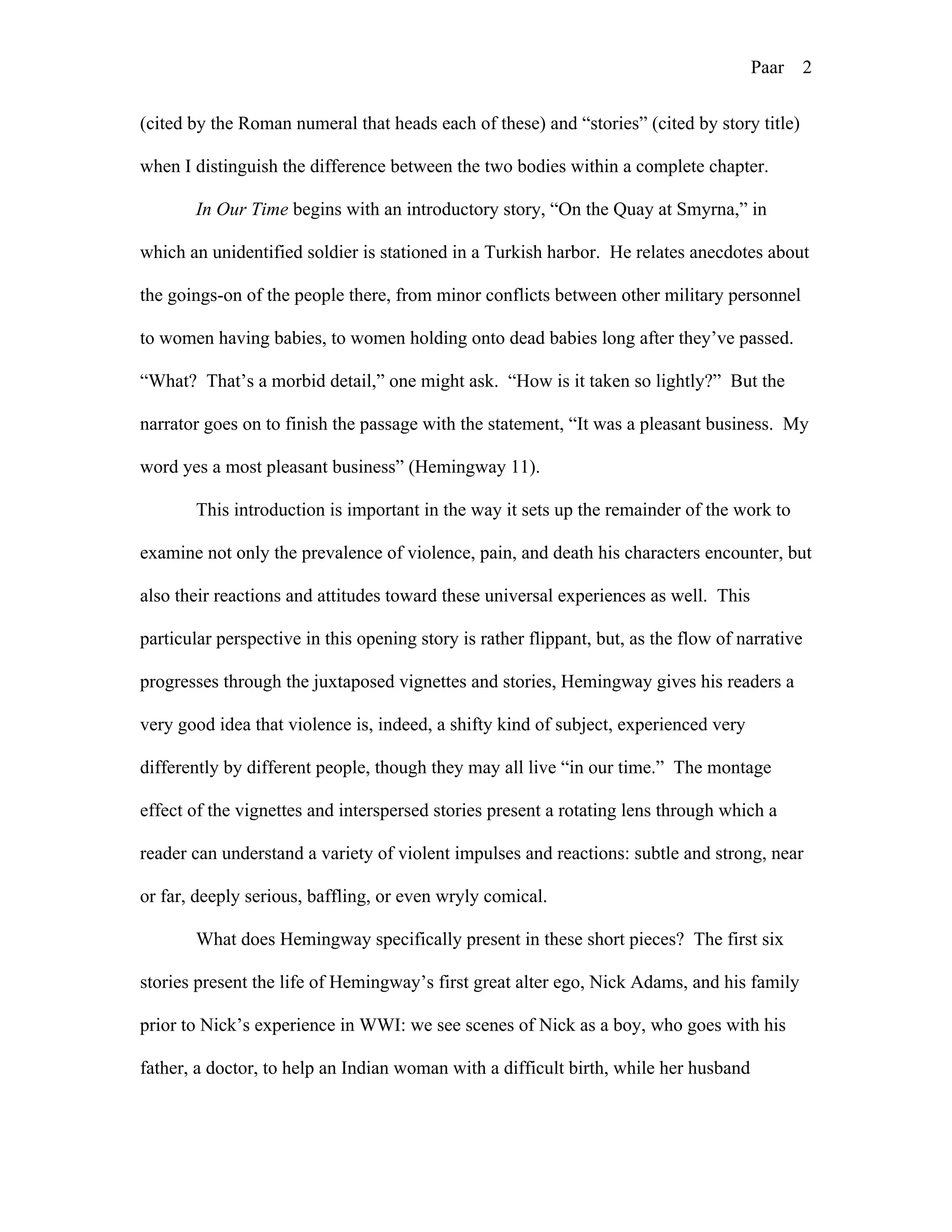
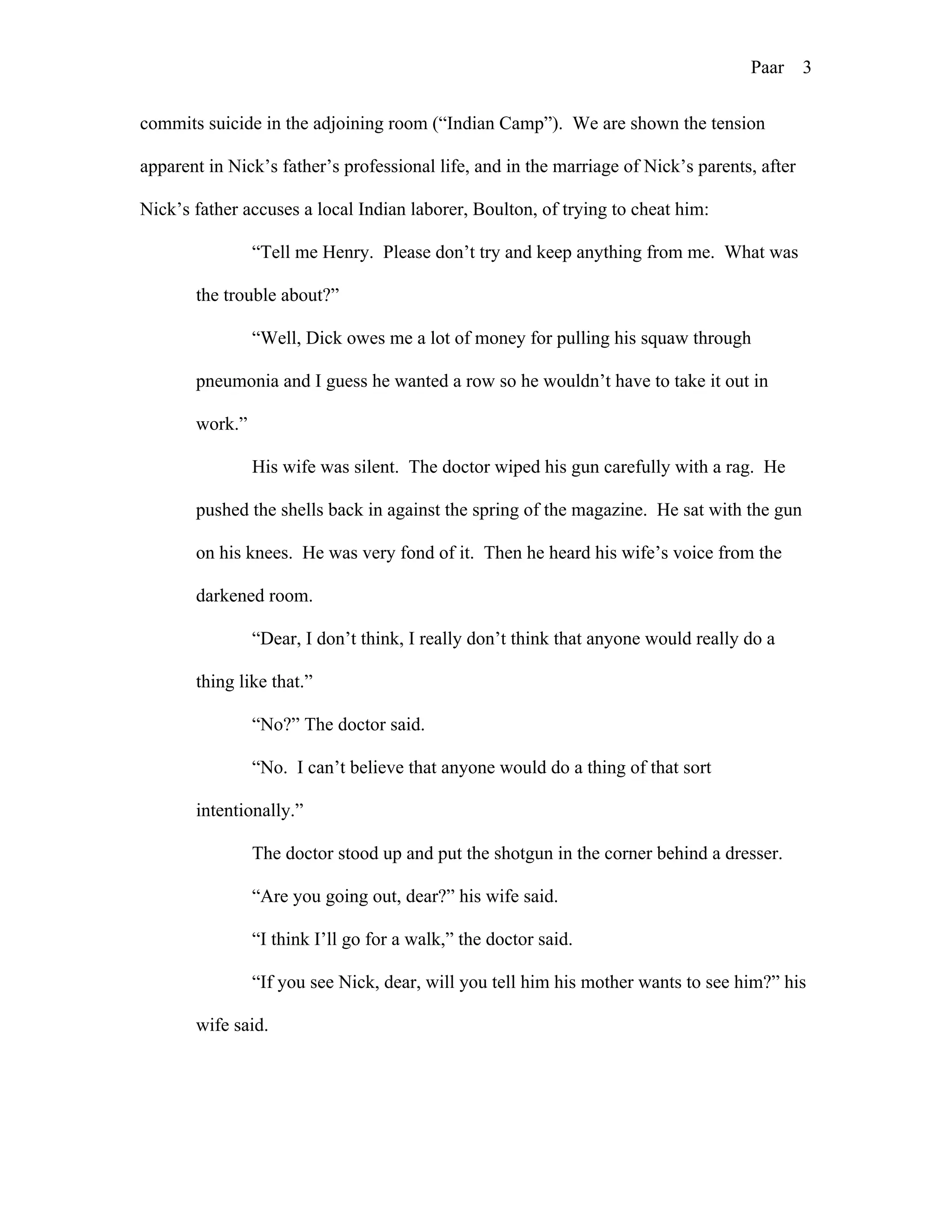
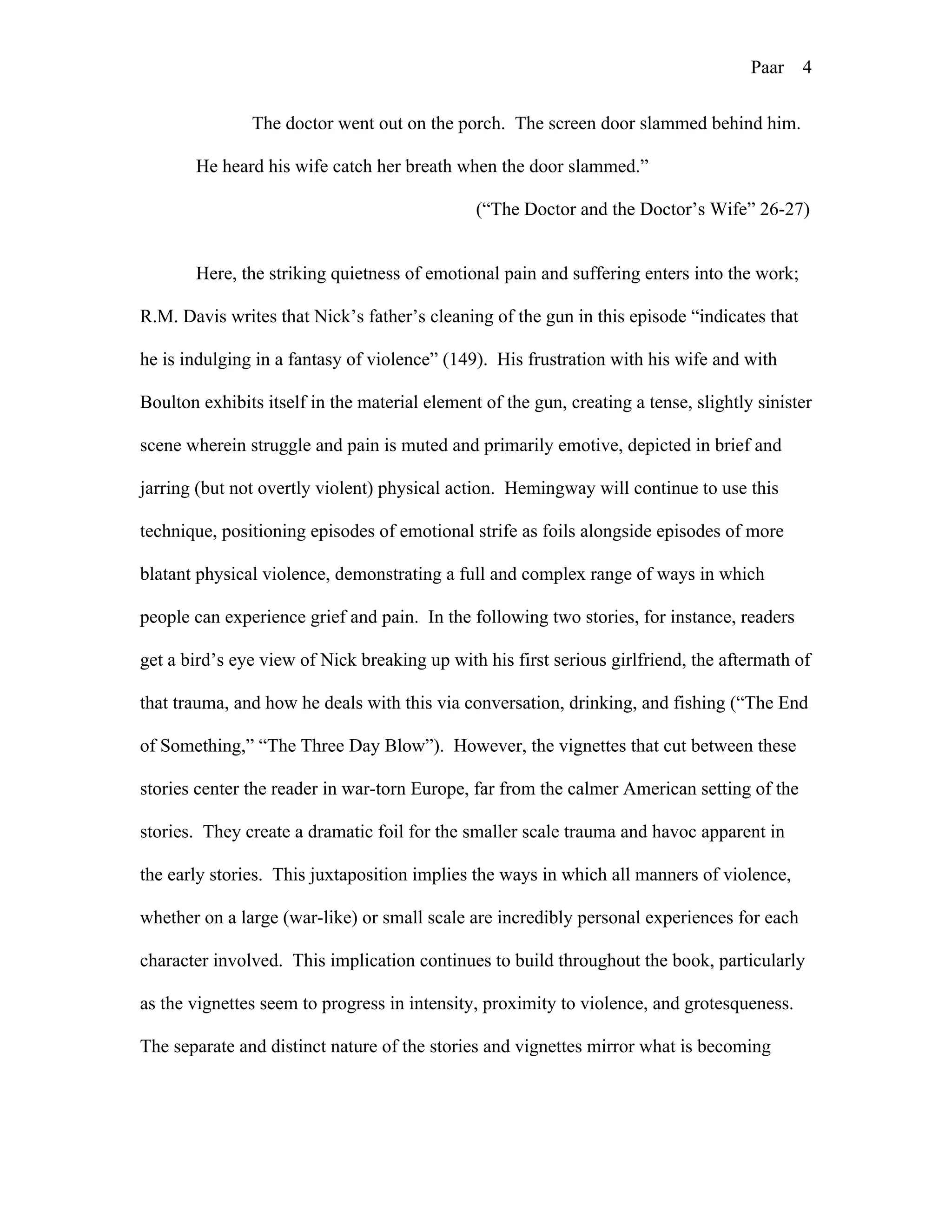
![Paar 5
thematically apparent: the often confused, disjointed experience people have when
coming into contact with suffering.
The first seven vignettes, each no more than 500 words, are set near European
WWI battlefields. In the first, a battery of soldiers is drunk, moving along a road, and an
adjutant warns a cook not to light a fire for fear of being seen by the enemy (I). In the
next vignette, women and children who have been displaced by nearby battles are toiling
along the roads, and a woman gives birth by the side of the road, while a young girl holds
up a cloth over her and cries (II). In the following vignettes, readers find Hemingway’s
unidentified narrator and his compatriots casually shooting enemy soldiers as they
clamber over a distant wall: “We waited till he got one leg over and then potted him. He
had so much equipment on and looked awfully surprised and fell down into the garden.
Then three more came over further down the wall. We shot them. They all came just
like that” (III, 29). Readers witness these same men killing enemy soldiers who have
been made into sitting ducks by an indefensible barricade (IV), and the execution of
political prisoners of war, one who is too sick even to stand up to be shot (V).
Hemingway splices these increasingly intense vignette scenes with scenes from Nick’s
life that ebb and flow with varied levels of emotional or physical violence, creating what
Jackson J. Benson refers to as a “catalogue of suffering” (118).
The way in which each vignette is paired with each successive story is curious; it
seems as though the increasing proximity of the violence of the war-time vignettes
provides the tension and foreshadowing that mirrors Nick’s own involvement with the
war. The connection David S. Leigh draws between story and vignette is this: “the
interchapter [vignette] shows in contrasting or clarifying form what the story tells by way](https://image.slidesharecdn.com/01c341d0-4904-4033-8a93-9999c9460764-161208023610/75/In-Our-Time-5-2048.jpg)

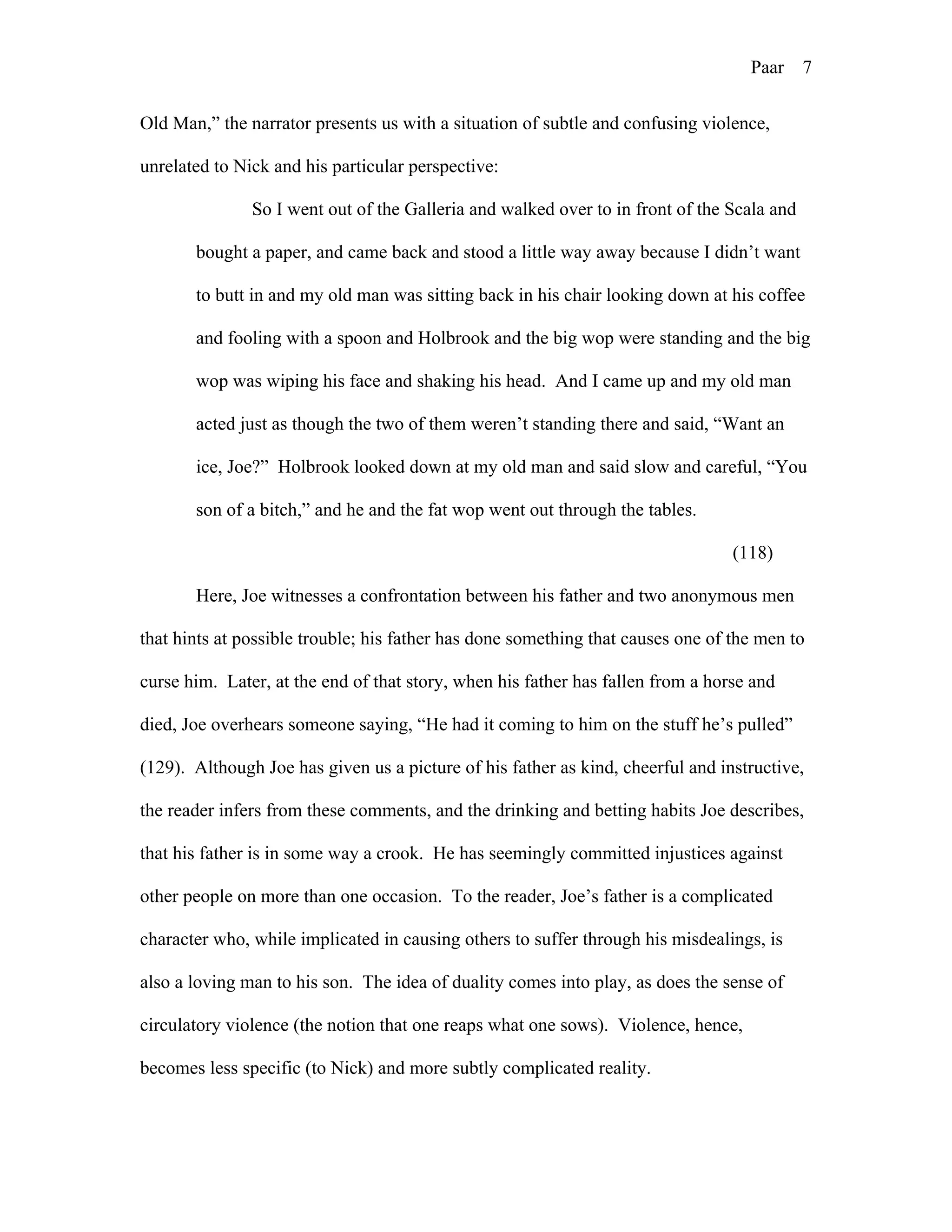
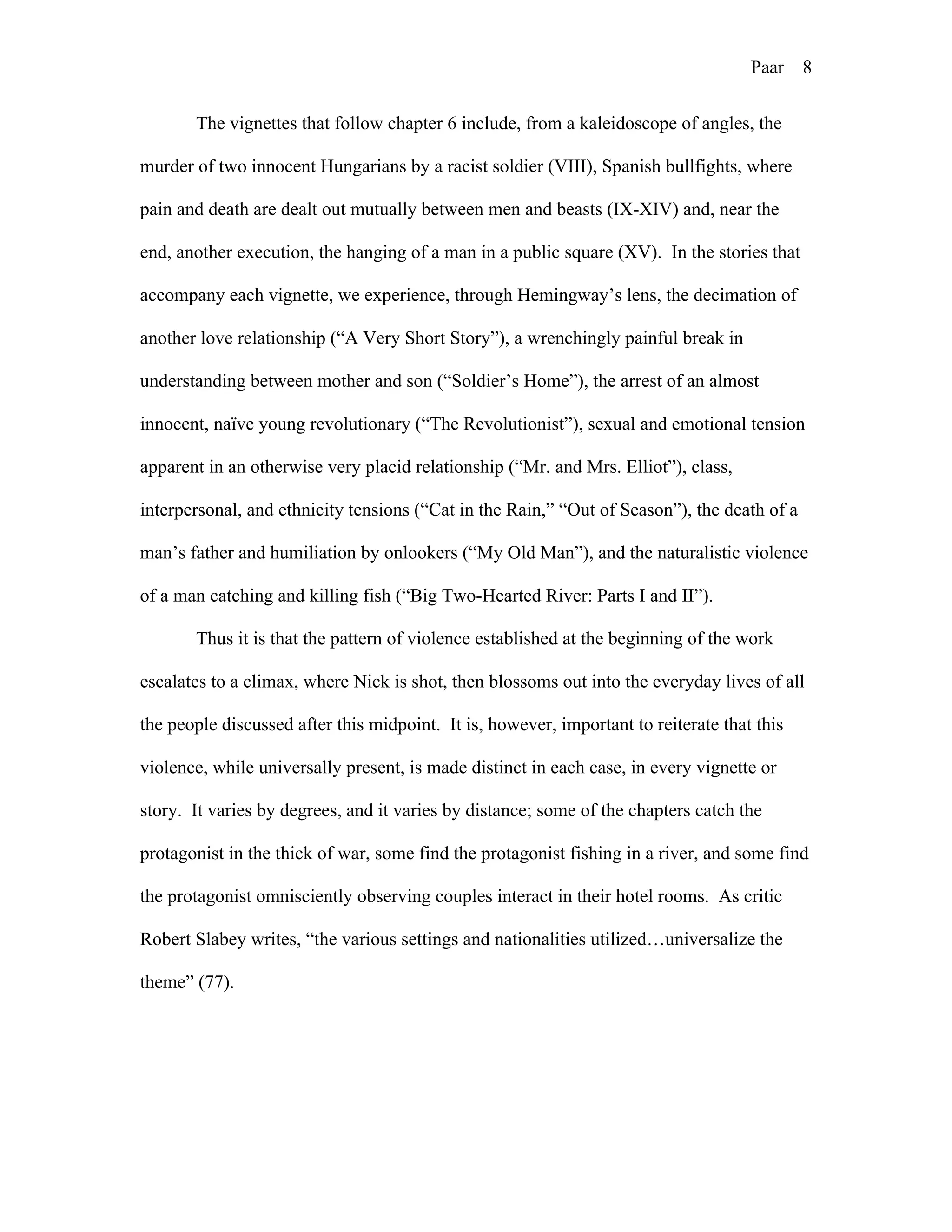
![Paar 9
It is also notable, here, that the vignette seems to introduce the more intense form
of violence in each complete chapter. Each vignette provides the more direct depiction of
human relationship with suffering, while the stories depict apparently calmer periods in
the characters’ lives as they roam throughout Europe and America. The vignettes and
stories inform and counterpoint one another. In this way, the vignettes are truly essential
when one considers the thematic implications of the whole work. Without such a mosaic,
or cubist, structure, Hemingway’s depiction of violence as complex in form and
experience might have been significantly weakened.
Slabey examines what he finds to be a kind of narrative flow throughout the
work’s entire patchwork contents, the structural arrangement being “not chronological,
but ideological” (77). He contends that “up to [vignette] (VIII) there has been a growing
awareness of the hostility and violence of the world. However no code of vitalizing
experience has appeared…[T]he major function on the three remaining vignettes is to
discover and articulate the code of manhood”(78). Slabey goes on to discuss how up to
and around the centerpiece “wounding” episode of vignette VI, there have been
presentations of violence that seem often misunderstood—they are seen from far away, or
they are depicted as confusing or impulsively enacted, particularly in “The Battler,” and
the vignette VIII episode of the impulsive street-killing of the Hungarians. After vignette
VIII, Slabey states, Hemingway gives us a vision of what it means to “shape violence
into an art…the perfect bullfight…in which death is conquered artistically and valiantly”
(78).
Slabley goes on to explain that the work as a whole seems to cluster in a “four
part pattern:” the first five Adams stories represent Nick Adam’s coming of age](https://image.slidesharecdn.com/01c341d0-4904-4033-8a93-9999c9460764-161208023610/75/In-Our-Time-9-2048.jpg)
; Results of this Education:
The Disillusioned Life of Expatriates [chapters](#8-13); Readjustment and Re-education
by Return to Basic Sensations in Former Environment [chapters](#14-15)…”(Leigh 130).
This concept of the shape of In Our Time is similar to that proposed by Slabey, the major](https://image.slidesharecdn.com/01c341d0-4904-4033-8a93-9999c9460764-161208023610/75/In-Our-Time-10-2048.jpg)
